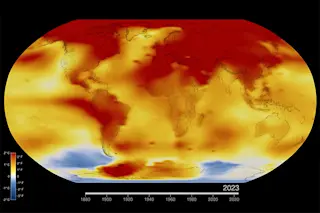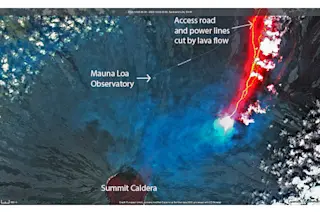Antarctica's soon-to-be iceberg is visualized here in a graphic from the European Space Agency. An ever-widening rift in an Antarctic ice shelf has grown from 70 miles long back in December 2016 to 124 miles long now. That means there's just another three miles to go before the fissure reaches the ocean. When that happens, the ice shelf will let loose a berg extending across 2,316 square miles, according to a new estimate based on satellite radar data released today by the European Space Agency. At its deepest, the berg will extend 689 feet below the sea's surface, ESA says. That's about 64 stories high. By comparison, the Empire State Building in New York is 102 stories tall. Combine that Delaware-sized geographic extent with the thickness and you get a berg that contains a mind-boggling 277 cubic miles of ice. By my calculations, that really does come to more than ...
The iceberg about to crack off Antarctica will be a million times more voluminous than the Empire State Building
The Larsen C Ice Shelf is set to produce a massive iceberg, impacting global sea levels significantly. Discover its size and implications.
More on Discover
Stay Curious
SubscribeTo The Magazine
Save up to 40% off the cover price when you subscribe to Discover magazine.
Subscribe












